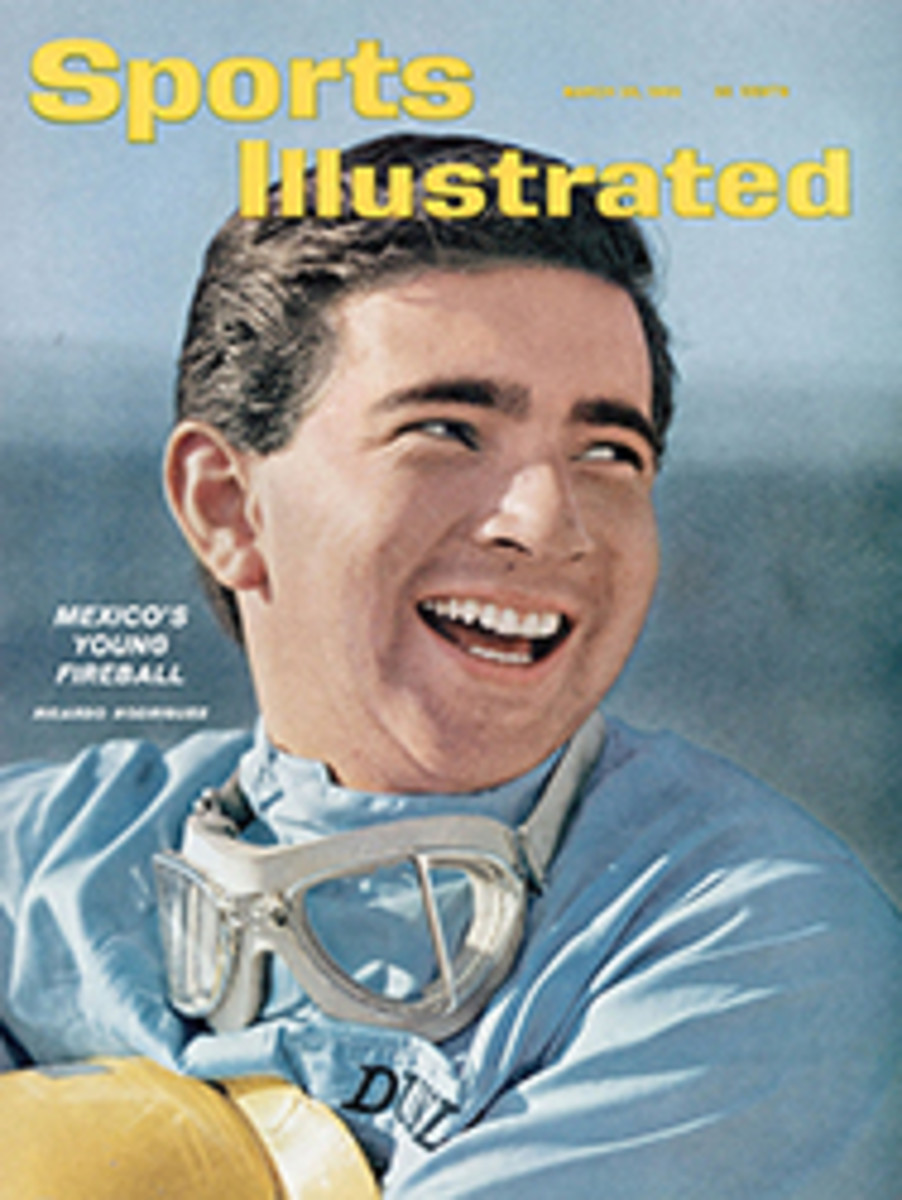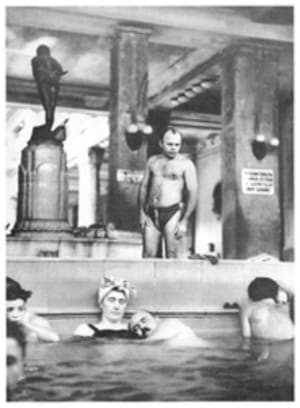
Champions of the Garlic Derby
When Kevin Keating, the public relations man for Le Trianon restaurant in San Francisco, decided to hold the first International Snail Derby in 1958, he had no idea of the perilous trail he had so naively set out to blaze. Putting together a football bowl game is simple compared to setting up a snail race. For a bowl game you get two teams, print some tickets and hire a stadium. Keating had to round up competitors for his snail derby, decide how they should compete and then persuade them to participate.
The owners of Le Trianon: Paul Dufour, the chef; James Coulot, the master of the cellar and bar; and Jean Lapuyade, the master of the restaurant—all more or less fresh from France—were delighted with the idea of a snail race. Keating sent out many press releases announcing the event. Then he was struck by a succession of sobering thoughts: He had not seen a live snail for 20 years; he did not know where to get snails; he had no idea what motivates a snail.
As race day approached, Keating engaged himself in research. All the while he kept assuring the boys at Le Trianon that everything was proceeding smoothly. The library had remarkably little information on snails. The encyclopedia said that snails are gastropods of the phylum Mollusca, which includes limpets, periwinkles, the common whelk and slugs. Keating spoke to scholars at the California Academy of Sciences. He learned that many snails are nocturnal and most are right-handed—that is, their shells spiral to the right. Keating found it impossible to purchase snails and was reduced to pursuing them at night in Golden Gate Park.
The snails turned out to be bashful beasts. For several days Keating could not entice them from their shells. He first shook them gently and then harder. He tickled them with a small paint brush. He offered them lettuce, grass, ranunculus leaves and mint. It was a week before he discovered that a bit of water dropped in the orifice of the shell impelled the creatures to emerge. Once out, they refused to move more than a few inches. Then they showed withdrawal symptoms and slurped back into their shells.
It was a frustrating time for Keating. His business is communication and he could not get through to the snails. "You can't say, 'Go!' to a snail," he complained. "Or, 'Whoa!' " But he gradually made progress. He found the snails would "run" on a wet track; if he dribbled water in front of them, they would follow the moist path fairly well.
Keating commissioned André Laherrere, an artist, to create a suitable track. It was two feet long with racing lanes of balsa wood on a green ground. The snails, however, refused to stay in their lanes. They poked their antennae in and out gingerly and glided in slow circles. Some of them oozed on the bias, crossing from lane to lane.
This problem was solved when Laherrere saw some tiny plastic sulkies in a 5¢ and 10¢ store. He redesigned the race course: with the wheels of the sulkies running in grooves, the snails, attached to the carts by adhesive tape, were kept on a straight course.
That first snail race was a resounding success. Rival press agents cursed Keating and wished they had thought of snail racing. Le Trianon was mentioned favorably in newspapers, on the radio and TV.
The next year's race was equally successful, and Keating thought his labors were over. But, a few days before the 1960 race, Paul Dufour, the chef, threw a bomb. "I will not stand for another race in which the common California garden snail is entered," he said. "We must have the genuine escargot de Bourgogne"
"It is a small matter," said Keating.
But it turned out to be a very large matter. First, Keating picked up the phone and, ultimately, got through to Geneviève Hayat, a girl who works for Trans World Airlines in Paris. "We must have snails," he said. "The edible snails of Burgundy."
"You can get them in cans," said Mile. Hayat.
"They must be alive."
Then Keating found that the Department of Agriculture has rules against the importation of live snails. The department does not care to have any foreign snails attacking its agriculture.
Keating got off a letter: "Could the snails enter the United States under a work permit, as performers? To be returned to France after the race?" The department did not answer.
Teletypes and cables rattled from San Francisco to New York and Paris. Whole squads of TWA people were involved. Finally, TWA obtained clearance from the Bureau of Entomology and Plant Quarantine. The snails could enter the country but must be destroyed after the race. Bob Brady, TWA's man in San Francisco, swore he would be in at the death.
The snails entered the U.S. via TWA jet, passed their inspection at Idlewild and arrived at Le Trianon. They were immediately given names and assigned to various owners:
Bonne Fille, to represent Le Trianon; Jaques Pott, the Mapes Hotel in Reno; Oui Oui for Ramponneau's in Paris; Muchos Gracias, entered in the name of Dario Borzani of Restaurant Rivoli, Mexico City; L. A. Dodger, entered by Patsy D'Amore of the Villa Capri, Hollywood; Irish Eyes from P. J. Moriarty's chop houses in New York.
Le Trianon was awash with gaiety. The scarlet and gold draperies glowed elegantly. Plaster cupids on the walls beamed in a cherubic way. There was champagne and a gala buffet. There were beautiful women from Japan, Korea, Australia and China, underdressed girls from Gay Nineties saloons, the consul general of a small Central American republic and a representative of the Reno Chamber of Commerce.
On a table, in the middle of the room, the Snail-O-Drome gleamed green and white under the bright television lights. There was a sudden shout from the people around the race course and the snails mooched elastically down their lanes. Their handlers used swizzle sticks to drop water along the track. Immediately a clamor broke out among the photographers.
"Start them over," cried a newsreel photographer.
"Let 'em go," cried a photographer from the San Francisco Chronicle.
A television cameraman stepped down from his perch on a stepladder and arbitrarily moved all the snails back to the starting line. Patsy D'Amore, whose L.A. Dodger was leading by three-quarters of an inch, swore under his breath. Every time the snails broke for the finish line (at .00035 mph) some cameraman shoved them back. Before the actual race began, one snail, Irish Eyes, the P. J. Moriarty entry, was overcome by the heat of the lights and died, fizzing like seltzer water (rumors circulated that salt had been put on his lane). Amid threats and accusations, Bonne Fille, Le Trianon's snail, was declared the winner. "A fix if I ever saw one," snarled Patsy D'Amore
After the race, Bob Brady, true to the word of TWA, stood by while Chef Dufour executed the French snails. Dufour did the deed by cooking them in butter and garlic, chopped onions and other good things. Then the snails were served to selected guests in accordance with Jean Lapuyade's classic pronouncement, the principle that has governed every International Snail Derby since then:
"All entries will become entrees."
Thus snail racing was established as the only sporting event in which the contestants are cooked and eaten.
THREE ILLUSTRATIONS

